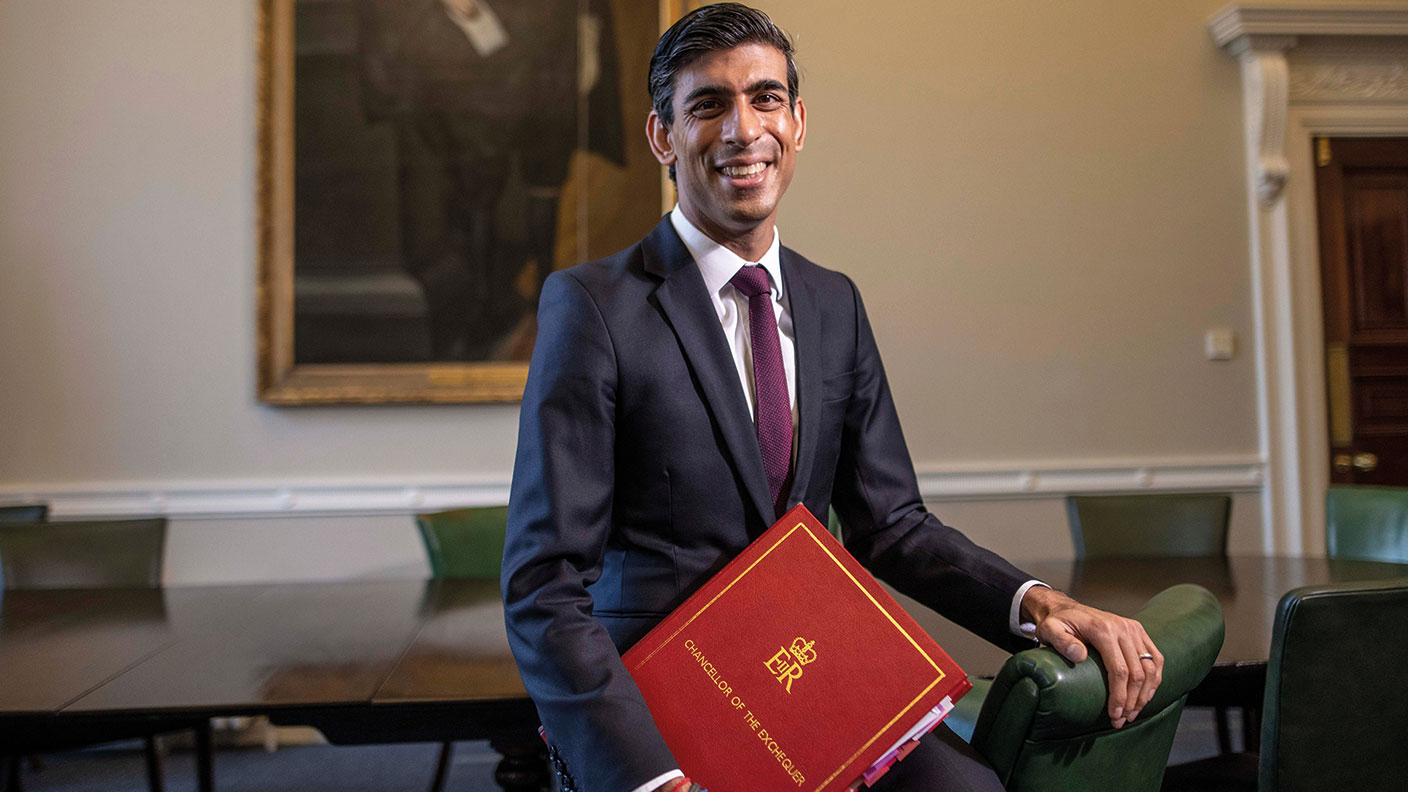Why the government's plan for funding social care is a lousy one
Insisting that people use their property wealth to pay for social care is perfectly reasonable, says Merryn Somerset Webb.


“We promise not to raise the rates of income tax, National Insurance or VAT. We not only want to freeze taxes but to cut them too.” That’s the Conservative manifesto in 2019. “I want to see... over time... lower rates of tax because I just believe that its nice for people to be able to keep more of their own money.” That’s Rishi Sunak in 2020.
So here we are, a year later, with a tax burden that is about to be one of the highest ever. The new health and social care levy is a 1.25% tax on income. Add it to the others (National Insurance and income tax) and the entry-level rate of income tax in England will now be 33.25% (unless you are paying back a student loan, in which case it is 42.25% – and yes, that is shocking).
The top rate of income tax in England is to be 48.25%; 49.25% in Scotland. You are about to get to keep rather less of your own money. The excuse for this is the pandemic. How could the Conservatives possibly have known? That question would have more resonance if this tax was as temporary as Covid-19 lockdown policies or a levy that could solve one of our major problems (the shocking inadequacy of the NHS or our ongoing social-care row).
MoneyWeek
Subscribe to MoneyWeek today and get your first six magazine issues absolutely FREE

Sign up to Money Morning
Don't miss the latest investment and personal finances news, market analysis, plus money-saving tips with our free twice-daily newsletter
Don't miss the latest investment and personal finances news, market analysis, plus money-saving tips with our free twice-daily newsletter
It isn’t either of these things. We are told (by a one-time small-state, low tax-loving party) that it represents a “permanent new role for government”. But we are also told that it is initially going to be used to cut waiting times in the NHS – and be used for the long-term funding of social care later. This seems unlikely. Money is never diverted from the NHS. It is always diverted to the NHS, and will be until someone somehow makes a genuine effort to reform it (they won’t). The Resolution Foundation reckons that by 2025 the Department of Health and Social Care will account for 40% of public spending, up from 28% in 2004. It won’t be long before your health and social care levy goes up again – to pay for social care.
A plan, but a lousy one
You could argue that there are positives here. At least there is finally a (sort of) plan for social care. We know who will pay what – and we know that few people will lose their home to care costs. However, while it might be a plan, it is still a lousy one. There is one perfectly acceptable alternative in a state-sponsored collective insurance scheme. There is a second: insisting that people use property wealth to pay for care.
The idea that houses are somehow sacred is very British (witness our inheritance-tax rules). But while our houses are often precious to us during our lives, they are generally nothing but representations of accumulated assets after our deaths. When we die our children don’t move into them as some kind of celebration of our lives. They sell them. In life a house is a home. In death it is just money. So why not use a type of state-backed equity release to pay for care?
The only vaguely positive thing I can say is that while the tax will fall predominantly on working people, it is at least being extended to dividend income. That makes sense. Much dividend income is paid instead of salary. If tax is going up for the salaried it should go up for those who earn via dividends too. However, tax is the one area where we wish Boris Johnson’s government would think more about levelling down than levelling up. Just like they said they would.
Get the latest financial news, insights and expert analysis from our award-winning MoneyWeek team, to help you understand what really matters when it comes to your finances.
Merryn Somerset Webb started her career in Tokyo at public broadcaster NHK before becoming a Japanese equity broker at what was then Warburgs. She went on to work at SBC and UBS without moving from her desk in Kamiyacho (it was the age of mergers).
After five years in Japan she returned to work in the UK at Paribas. This soon became BNP Paribas. Again, no desk move was required. On leaving the City, Merryn helped The Week magazine with its City pages before becoming the launch editor of MoneyWeek in 2000 and taking on columns first in the Sunday Times and then in 2009 in the Financial Times
Twenty years on, MoneyWeek is the best-selling financial magazine in the UK. Merryn was its Editor in Chief until 2022. She is now a senior columnist at Bloomberg and host of the Merryn Talks Money podcast - but still writes for Moneyweek monthly.
Merryn is also is a non executive director of two investment trusts – BlackRock Throgmorton, and the Murray Income Investment Trust.
-
 Boost for over 100,000 families on Child Benefit as new HMRC payment system rolled out
Boost for over 100,000 families on Child Benefit as new HMRC payment system rolled outThousands of households will no longer have to pay the dreaded High Income Child Benefit Charge through self-assessment
-
 Are you being haunted by the ghost of Christmas past? How festive cutbacks could boost your long-term wealth
Are you being haunted by the ghost of Christmas past? How festive cutbacks could boost your long-term wealthThe average family spends around £1,000 over the Christmas season. Here’s how much you could have gained if you had invested some of the money instead.
-
 The steady rise of stablecoins
The steady rise of stablecoinsInnovations in cryptocurrency have created stablecoins, a new form of money. Trump is an enthusiastic supporter, but its benefits are not yet clear
-
 Goodwin: A superlative British manufacturer to buy now
Goodwin: A superlative British manufacturer to buy nowVeteran engineering group Goodwin has created a new profit engine. But following its tremendous run, can investors still afford the shares?
-
 A change in leadership: Is US stock market exceptionalism over?
A change in leadership: Is US stock market exceptionalism over?US stocks trailed the rest of the world in 2025. Is this a sign that a long-overdue shift is underway?
-
 Modern Monetary Theory and the return of magical thinking
Modern Monetary Theory and the return of magical thinkingThe Modern Monetary Theory is back in fashion again. How worried should we be?
-
 Metals and AI power emerging markets
Metals and AI power emerging marketsThis year’s big emerging market winners have tended to offer exposure to one of 2025’s two winning trends – AI-focused tech and the global metals rally
-
 King Copper’s reign will continue – here's why
King Copper’s reign will continue – here's whyFor all the talk of copper shortage, the metal is actually in surplus globally this year and should be next year, too
-
 The coming collapse in the jobs market
The coming collapse in the jobs marketOpinion Once the Employment Bill becomes law, expect a full-scale collapse in hiring, says Matthew Lynn
-
 Renewable energy funds are stuck between a ROC and a hard place
Renewable energy funds are stuck between a ROC and a hard placeRenewable energy funds were hit hard by the government’s subsidy changes, but they have only themselves to blame for their failure to build trust with investors
